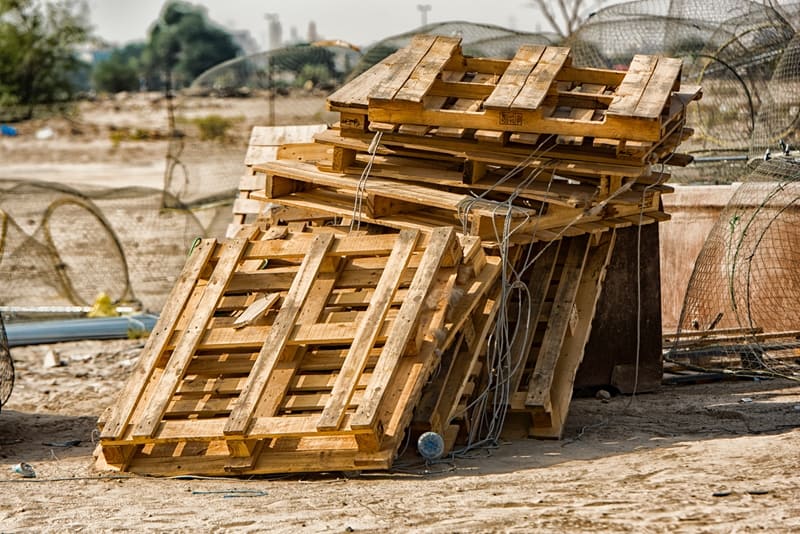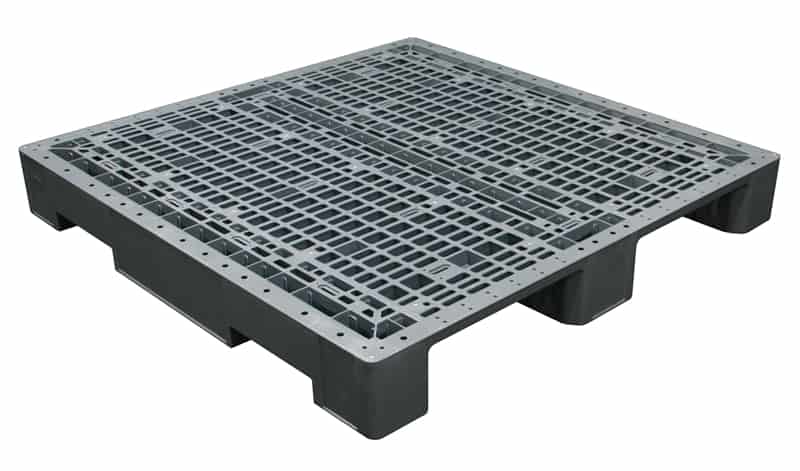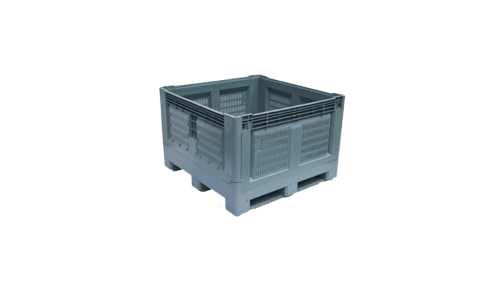

Unfortunately, the familiar wooden pallet doesn’t have a particularly long lifespan. They typically only last a handful of trips before they have to be replaced, meaning ongoing replacement costs and a lack of reliable transport solutions. Plastic pallets are a much stronger, long-lasting solution, able to make hundreds of trips within an average ten-year lifespan, and are therefore a more reliable option for your shipping logistics.
Comparing Wooden & Plastic Pallet Reliability
Some organisations still prefer wooden pallets because they’re usually cheaper to buy in the first place, and their supply chain is set up for them. While price is an important consideration, there are several more variables to weigh up.
Strength
Wooden pallets tend to break much more easily than plastic pallets. Not only does this mean you have to keep paying to replace them, but you’re also risking damaging your goods and creating occupational health and safety hazards. If you do opt for wood, take some time to find a reputable supplier that uses high-quality materials. Plastic pallets are much less fragile and it takes a lot of pressure for one to actually break. Depending on the design, a plastic pallet can hold loads of up to 2,000 kg.


Customs Reliability
Improving the reliability of your supply chain is especially important if you ship internationally and have customs regulations to comply with. Under the ISPM 15 regulations, all wooden packaging must be certified pest free. In practice, this means having your pallets fumigated before shipping. If your customs official isn’t happy with your paperwork, you could face delays to the onward journey or even see your goods returned. This isn’t a problem with plastic pallets, as they’re naturally pest free and hygienic.
Consistent Sizing
Plastic pallets are made to an exact mould so you can rely on them being the same size every time.
Wooden pallets are made to a specific size, but the variation of material means you can’t always guarantee that each one you buy is exactly the same. With loose nails or damaged slats, even the shape can change. This makes it difficult to plan your logistics and operations around your pallets and doesn’t support the move to more automated systems.
However, plastic pallets are made to an exact mould. This means you can rely on them being the same size and weight every single time. You can use them in automated environments and better operate in a closed-loop supply chain where the pallet is continuously returned to you.
Plastic Pallet Material
With wooden pallets, buyers must consider where the materials are coming from. Not all pallet makers are sourcing sustainably. Plastic pallets are often recycled when one company finishes with them and they are no longer in their best condition. They can be melted down and re-moulded indefinitely, making them an environmentally friendly option in the long run. Any part of a wooden pallet that can’t be used to build new ones tends to be broken down into mulch or recycled into other materials until it reaches the end of its lifespan.


Avoid Broken Pallets, Whatever The Material
Whatever type of pallets you use, how you care for them impact how long they’ll last.
Our top three tips for keeping your pallets in good condition:
1. Stack and store appropriately
Especially when using wooden pallets, how you store your pallets when they’re not in use goes a long way to keeping them in good condition. Keeping them outside in wet weather, for example, could mean they weaken due to moisture and break more easily. Meanwhile, stacking pallets at height makes them more likely to topple over and break as a result. Finally, choose the right type of loaded storage system too. Not all pallets are strong enough for you to stack layers of goods on each other. You may need to stack in single layers or invest in a stronger pallet altogether if you simply don’t have enough room.
2. Adhere to weight guidelines
When you buy pallets, check what their maximum load weight is and stick to it. If you regularly put too much pressure on the pallet, you risk it weakening over time and eventually causing damage. If you need to store heavy stock on your pallets, talk to your supplier about the products you deal with. And then consider whether a high-strength plastic pallet might better serve your needs.
3. Transport properly
Avoid your pallets being pushed or dragged across the floor by investing in the proper equipment you need to move them. Forklifts or pallet jacks are essential items. Train your staff to use them properly, lifting pallets slowly and carefully. Any damage can cause a pallet to weaken over time and make it less reliable.
Source Reliable Plastic Pallets With Eco Pallets
To talk about how we can help you make your pallet selection more reliable, get in touch with the team at Eco Pallets today. We have a huge range of plastic pallets available across Australia, for all types of supply chains.
Recommended: The Benefits of Plastic Over Wooden Pallets









